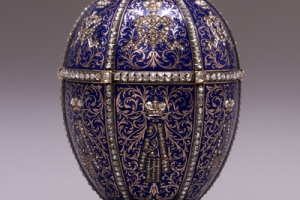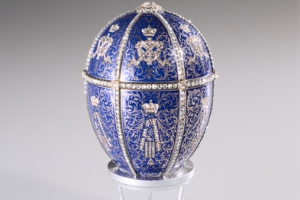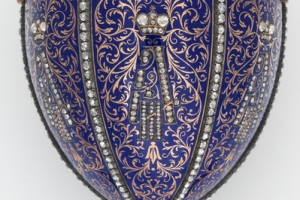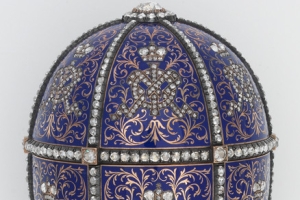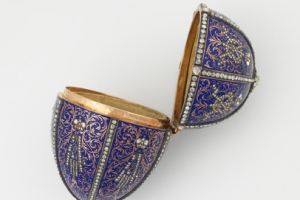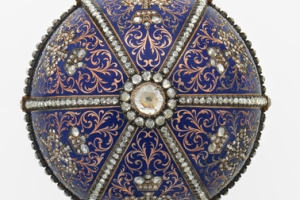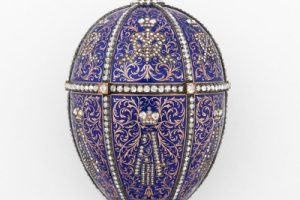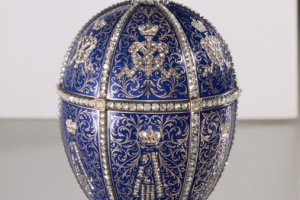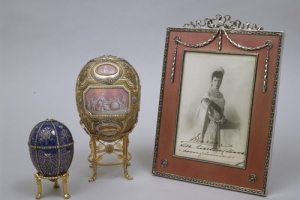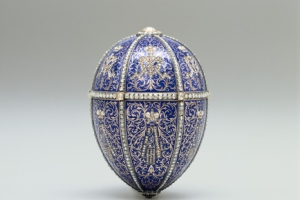TWELVE MONOGRAM EGG
Creator(s): Fabergé (Firm) , Mikhail Evlampievich Perkhin (Workmaster)
On view in: Icon Room
About this object
In 1885, Alexander III initiated the custom of presenting his wife, Maria Fedorovna, with a Fabergé egg each Easter. Alexander III's son, Nicholas II, continued the family tradition each Easter by giving an egg to both his mother, Maria Federovna, and his wife, Alexandra. Rows of diamonds divide the egg into twelve panels. The crowned ciphers of Alexander III and Maria Fedorovna, set in diamonds, provide a simple yet elegant decoration against the dark blue enamel. Only under high magnification is it possible to notice the champlevé enamel technique. Areas for the enamel were carved out of the gold, leaving the thin red-gold ribs that form the foliate design. To the naked eye, it appears that the gold design was painted on the ovoid surface.
The gold Easter egg is covered with royal blue champlevé enamel divided into twelve panels by bands of rose cut diamonds. The blue panels have all over scroll work in red gold and the ciphers of Emperor Alexander III (AIII) and his wife, Empress Maria Fedorovna (MF) set in diamonds, each six times, the former around the lower part of the egg, the Empress's ciphers around the cover. A large rose cut diamond is set within rose-cut diamond border at each end. The interior is lined with ivory satin. The surprise is missing.
- Object name:
- TWELVE MONOGRAM EGG
- Made from:
- Gold -- champlevé enamel -- diamonds -- satin
- Made in:
- Saint Petersburg, Russia
- Date made:
- 1896
- Size:
- 3 1/8 × 2 3/16 in. (7.9 × 5.6 cm)
Detailed information for this item
- Catalog number:
- 11.63
- Class:
- Object Genres
- Signature marks:
- MARK: crossed anchors and scepter (assaymark of St. Petersburg before 1899); 56 for gold standard; Fabergé in Cyrillic; MP in Cyrillic (initials of workmaster Mikhail Perkhin) [inside] MONOGRAM: AIII, MF [on outside]
- Credit line:
- Bequest of Marjorie Merriweather Post, 1973


